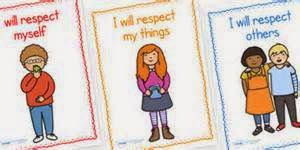“The classroom should be an entrance into the world, not
an escape from it.”
- John Ciardi
Creating a classroom that has
a positive and supportive environment is one of the essential aspects of a
teacher’s job. The teacher is responsible for creating a positive climate in
her classroom, that promotes social, emotional, as well as academic learning.
Although the teacher plays an
important role in creating a positive classroom environment, however she cannot
achieve this without the cooperation of the students and the parents; every one
collectively works to bring about an environment where they all feel respected,
secure, and accepted.
The teacher is the main
driving force that can actually set the positive learning environment in the
class. She can motivate her students to be successful and achieve their
potential. There are lots of ways in which she can do this, but above and
foremost I feel it is her relationship with each individual student in her
class.
The teacher’s attitude
towards her students, how she contributes and helps them grow as learners has a
great impact on their academic achievements. Students respond less to teachers
who criticize their work often especially in a negative manner, who are inconsistent,
and draw attention to student shortcomings. On the other hand teachers that are
approachable, friendly, helpful, and supportive; students respond better to
them.
Teachers need to convey to
her students by her attitude that is concerned about them, and cares about
their emotional as well as learning needs. This attitude of the teacher will
inspire the students to become better learners and motivate them to follow
rules and procedures set by the teacher.
The students should be able
to express their problems with their teachers; they should be able to trust the
teacher. The teacher needs to listen sincerely and intently to her student’s
problems, and reassure them that making mistakes is essential part of the
learning process.
A successful classroom is one
in which the students are enthusiastic learners, this enthusiasm stems from the
teachers themselves.
An educator must set high
academic achievement expectations for her students. The students must be made
aware that the teacher has high expectations from them. A teacher should never
undermine her students and convey negative perceptions; because low teacher
expectations results in students not motivated to do their best and perform
below their potential. Teachers with high expectations from their students
closely monitor the progress of their students; they encourage their students
and provide them useful and constructive feedback on their progress. They
encourage their students to do critical thinking and take pride in their work.
Professor Hattie author of, ‘Teachers
make a Difference’ says:
“Expert teachers are proficient in
creating optimal classroom climates for learning, particularly to increase the
probability of feedback occurring. They build climates where error is welcomed,
where students questioning is high, where engagement is the norm, and where
students can gain reputations as effective learners.”
Cultural Diversity in Classrooms
As I mentioned above that
building positive student-teacher relationships is the key element of a
establishing a positive learning classroom environment. This aspect of teaching
becomes even more important in a class that is culturally diverse.
It is of essence that a
teacher should encourage her students to understand that every individual
student has different strengths but collectively they can work together and be
successful. The students need to be respectful and tolerant of one another
regardless of any differences in their races, ethnicity, color, religion, or
socio-economic status.
In order to create a positive
culturally diverse classroom the teachers needs to ensure that the differences
of all the students are cherished and appreciated as opposed to fearing and
judging the students.
A mutually respectful
classroom environment is important for its students to become successful
learners. The teacher needs to establish rules in the class that encourage the
students to treat each other with the same respect that they expect in return.
They should be able to stand for some who is being tormented and is struggling.
The students should be encouraged to deal with every one with unconditional
positive regard.
For a teacher to promote this
she need s to model it her self, children reflect the behavior that they see,
therefore it is very important that the teacher models proper behavior and
respect towards others.
“Effective
classroom discipline… should be a means of helping students become caring,
ethical individuals”
- (Hardin, 2008)
Sources:
Create a successful classroom climate. (n.d.). Retrieved May 3, 2015, from http://www.classroom-management-success.org/classroom-climate.html
Create a Respectful Environment to Beat the Bully. (2013, July 7). Retrieved May 3, 2015, from http://nobullying.com/create-a-respectful-environment-to-beat-the-bully/
http://www.scholastic.com/teachers/article/teaching-diversity-place-begin-0



No comments:
Post a Comment